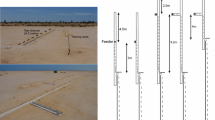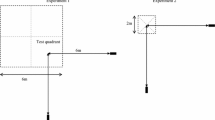Summary
Gerbils (Meriones unguiculatus) can specify the location of a goal by means of visual landmarks and will return to such a goal from different starting positions in the vicinity of the landmarks. To discover whether landmark-cues are used continuously during an approach to the goal, gerbils were trained to forage for sunflower seeds close to a single illuminated light-bulb on the floor of an arena. As they approached the bulb, it was switched off and another bulb in a variable position with respect to the first turned on. On 52 out of 71 trials the gerbils changed their trajectory (latency ca. 240 ms) to aim for the newly lit bulb (Fig. 1 A, B). On the remaining trials, gerbils maintained their original course towards the first bulb as though it were still lit and then paused after a longer delay before eventually changing direction (Fig. 1C). Thus, an approach to a beacon is usually under continuous visual control. This ensures that the gerbil will reach its goal correctly despite any inaccuracies in its initial computation of its approach.
When switches were made between more complex arrays of landmarks, the gerbils' behaviour was less clear-cut. Possible reasons for this difference are suggested.
Similar content being viewed by others
References
Collett TS, Cartwright BA, Smith BA (1986) Landmark learning and visuo-spatial memories in gerbils. J Comp Physiol A 158:835–851
Morris RGM (1981) Spatial localisation does not require the presence of local cues. Learning Motivation 12:239–260
Olton DS (1982) Spatially organised behaviours of animals: behavioural and neurological studies. In: Potegal M (ed) Spatial abilities: Development and physiological foundations. Academic, New York London Paris, pp 335–360
Suzuki S, Augerinos G, Black AH (1980) Stimulus control of spatial behaviour on the eight-arm maze in rats. Learning Motivation 11:1–18
Thinus-Blanc C, Ingle D (1985) Spatial behaviour in gerbils (Meriones unguiculatus). J Comp Psychol 99:311–315
Author information
Authors and Affiliations
Rights and permissions
About this article
Cite this article
Collett, T.S. The use of visual landmarks by gerbils: Reaching a goal when landmarks are displaced. J. Comp. Physiol. 160, 109–113 (1987). https://doi.org/10.1007/BF00613446
Accepted:
Issue Date:
DOI: https://doi.org/10.1007/BF00613446




